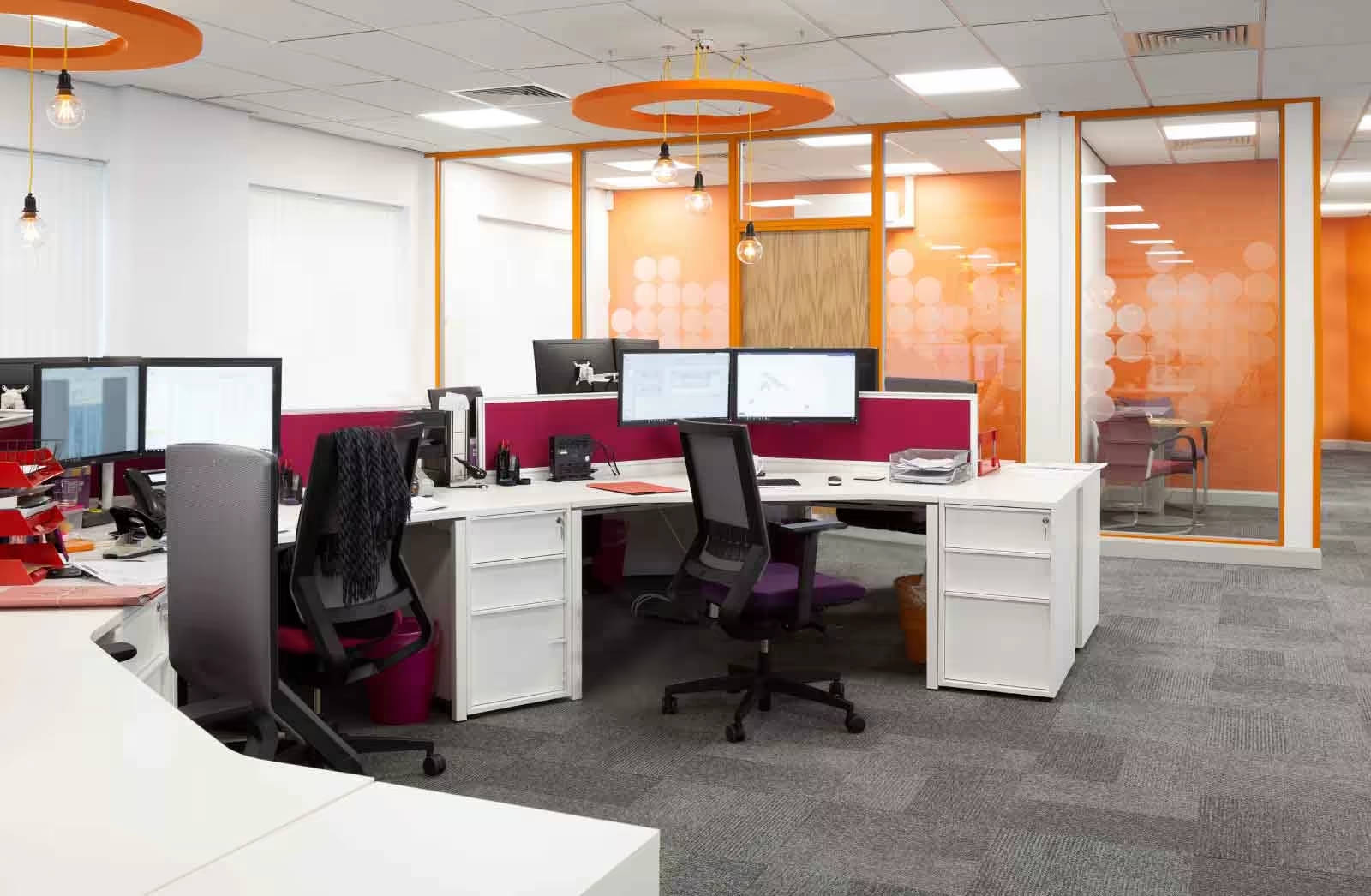Office fitouts, in a nutshell, represent the process of making interior spaces suitable for use, specifically in an office setting. This process often involves renovating or modifying an office space, making it more functional, aesthetically pleasing, and conducive to productivity. Fitouts can range from minor touch-ups to complete overhauls, each with a unique set of procedures and requirements.
The significance of office fitouts cannot be overstated. An intelligently designed workspace can have a profound impact on employee morale, productivity, and the overall brand image. It's not just about the physical environment, but also about creating a space that embodies the company culture and values.
Understanding Office Fitouts
The term 'office fitout' refers to the comprehensive process of tailoring and equipping an office space to match the needs and brand ethos of an organization. This involves everything from strategic space planning, and installing essential facilities, to selecting appropriate furnishings, and even integrating specific brand elements into the design.
There are a few different types of office fitouts. A 'Category A' fitout generally includes basic elements such as raised floors, suspended ceilings, and essential services like electrical and air conditioning. A 'Category B' fitout delves into more detailed aspects, turning a generic space into a bespoke environment that reflects the company's identity. This might involve creating meeting rooms, installing IT infrastructure, or implementing specific aesthetic designs.
The debate of 'custom office design vs traditional fitouts' isn't just about aesthetics or branding; it has significant implications for businesses. Regardless of the chosen approach, an effective office fitout can transform the workspace, bolster employee engagement, and enhance a company's brand image. Beyond these, a well-thought-out space can lead to cost efficiencies in the long term.
Preparation Phase
Starting with a clear vision is paramount in the fitout process. Identifying your organization's needs and objectives helps in shaping this vision. This could mean understanding how many workstations you require, what kind of meeting spaces you need, or how you want your brand to be represented in your office environment.
With objectives outlined, it's time to assemble a capable team. You could mobilize an internal team comprising individuals from various departments, or you could hire a professional fitout service with expertise in this domain. The latter often comes with industry-specific insights and experience, ensuring a smooth transition from the existing state to your dream workspace.
Budgeting is a critical step in the preparation phase. Establishing a realistic budget helps you to align your fitout goals with financial constraints. It includes costs for construction, furniture, technology, and sometimes, unforeseen expenses. A well-planned budget can prevent financial surprises down the line.
It's also essential to understand any building regulations and permissions that might apply to your office fitout. Ensure you're compliant with local building codes and regulations and obtain necessary permissions from relevant authorities. Doing so can help avoid legal complications and ensure the safety of your workspace.
Design Phase
As you embark on the design phase, incorporate your brand and office culture into the plan. This could mean using brand colors in the decor, creating spaces that encourage your company's style of collaboration, or displaying company values in shared spaces. An office environment that echoes your company culture can foster a sense of belonging among employees.
Space planning plays a significant role in the design phase. A well-designed office layout not only ensures efficient use of space but can also facilitate better communication, encourage collaboration, and enhance overall workflow. It's crucial to consider factors like natural light, noise levels, and traffic flow in your space planning efforts.
The design phase also presents an opportunity to involve employees in the process. After all, they are the ones who will be using the space daily. Collecting their ideas and feedback can lead to a design that caters to their needs and comfort, thus boosting morale and productivity.
Lastly, consider future growth and adaptability in your design. As your business evolves, your office space should be able to accommodate these changes. Whether it's potential team expansion, technological upgrades, or changes in work patterns, a forward-thinking design can save you from frequent disruptive renovations in the future.
Construction Phase
Once the design is ready, it's time to bring your vision to life. To do this, you need a team of reliable contractors who can deliver quality work on time. When choosing contractors, consider their experience, previous projects, and reviews from past clients. This helps ensure a successful transformation of your office space.
With construction underway, continuous monitoring is crucial. Regular check-ins and site visits can help catch any issues early, ensuring that the project stays on track. This also provides an opportunity to make any necessary adjustments to the fitout plan.
Project management plays a significant role during construction. A dedicated project manager can coordinate with various stakeholders, keep track of the timeline, manage the budget, and ensure that all parts of the project are aligning seamlessly. Effective project management can help prevent delays and cost overruns, leading to a smoother fitout process.
Final Touches
As the construction phase wraps up, it's time for the final touches. One of the key tasks is installing IT and communication systems. This includes setting up computers, telephones, network infrastructure, and any other technology your team uses. Ensuring a smooth IT setup is vital for seamless operations once the new office is in use.
Next, the right furniture needs to be selected and arranged. Consider pieces that complement your office design and culture, and most importantly, offer comfort and functionality. Furniture placement should align with your space planning to maximize efficiency and ease of movement.
Lighting, HVAC systems, and other environmental considerations are critical to creating a comfortable workspace. Natural light can boost mood and productivity, while an efficient HVAC system ensures a comfortable climate throughout the year. Furthermore, consider aspects like indoor plants for improving air quality and enhancing the aesthetic appeal of your office.
Lastly, the importance of safety measures and ergonomics cannot be overstated. Ensure that all safety regulations are met, emergency exits are clearly marked, and ergonomic guidelines are followed when setting up workstations. This will contribute to a safer, healthier, and more comfortable environment for your team, potentially reducing workplace injuries and boosting productivity.
Post-Fitout
After completion of the office fitout, the next stage involves relocating operations to the newly transformed space. Ensuring a smooth transition can minimize disruptions to business activities. This period also allows employees to settle in and familiarize themselves with their new environment.
It's beneficial to provide training for employees to effectively use the new environment. This could be as simple as orienting them about the new layout, safety exits, and technology systems or even explaining the rationale behind specific design choices. The goal is to enable employees to harness the potential of their new workspace.
Once settled, an evaluation of the fitout becomes necessary. This involves gathering feedback from employees, reviewing the project against initial objectives, and identifying areas of improvement. The feedback process is crucial in understanding the impact of the fitout and making any needed adjustments.
Finally, it's important to plan for future maintenance or potential changes. Regular upkeep helps keep the office space looking its best and functioning efficiently, while having a plan for potential changes ensures your office can adapt as your business needs evolve.
In Summary
An office fitout is more than just a redesign of space; it's a strategic tool that can drive productivity, employee satisfaction, and brand image. Whether you opt for a traditional fitout or a custom office design, the key lies in thoughtful planning, effective execution, and continuous evaluation.
A well-executed office fitout not only creates a conducive workspace for your team but also lays a physical foundation for your business to thrive and grow. Investing in a quality office fitout could be one of the best decisions an organization makes for its future.



